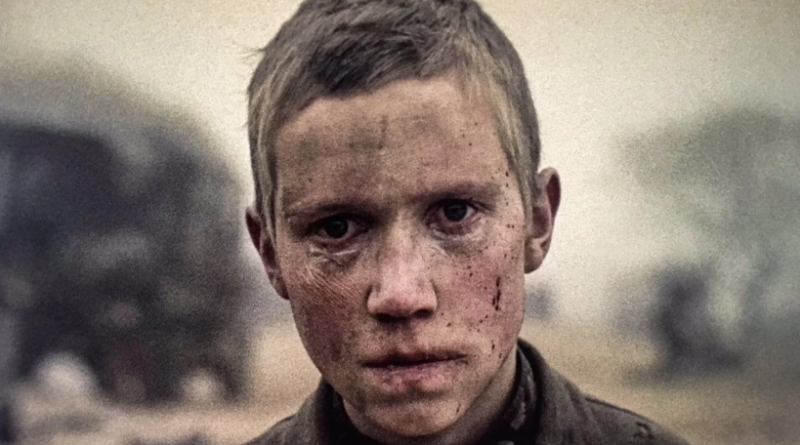REVIEW: Elem Klimov’s ‘Come and See’
Photo: Come and See is Elem Klimov’s response to World War II. Photo courtesy of Janus Films / Provided by Film Forum press site with permission.
Elem Klimov’s Come and See is a powerfully haunting film about the ravages of World War II on the eastern front of the European theater. The drama is so realistic and visceral that some scenes prove almost impossible to watch. The horrors of war are on full display, and that makes Come and See an effective anti-war film.
The Janus Films release, which has been newly restored and recently played New York City’s Film Forum, takes place in Belorussia and features soldiers and villagers speaking Belorussian, Russian and German (English subtitles are provided). The protagonist is a 15-year-old named Aleksei Kravchenko, who enrolls as a partisan, despite his mother’s pleas that he’s too young to head to war.
What Aleksei witnesses over the course of a few weeks, which feel like a few years, weaves between the brutal and the beautiful. At first, he enjoys the adventure of it all and even befriends a girl who plays games with him in the forest. The rifles around him almost seem like toys, objects of fun and masculinity rater than death and destruction.
When German planes fly low overhead and disrupt Aleksei’s dreamlike state, he is walloped with emotion and physical hardship. The bombs exploding cause him to go deaf, and with each step of survival he seems to add a wrinkle to his young face. He slogs through mud, is teased by soldiers, loses touch with his new female friend and sees horrors that no one, especially a child, should witness.
The final hour of the two-and-a-half film is unbelievably believable, a bruising parade of images that are frightening. Any student of WWII will know some of these as chapter headings in a history book, but to see Klimov so vividly bring them to life is quite another matter. The burning of buildings, including churches, is a visual gut-check, especially with the extra audio of screaming villagers on the inside. That young friend Aleksei found in the woods, well, she returns, and her fate is beyond saddening.
Klimov has created something of a masterpiece with the film. The visuals, even 35 years after the movie’s initial release, are still stark and surreal. As a director, he seemed to like closeups and documenting the intricacies of facial expressions. Aleksei’s visage, for example, frequently takes up the entire screen, and he simply looks at the viewer, sometimes with a tear rolling down his cheek. He’s displaying youth, and the viewer is watching innocence seep away from his hardened eyes.
The camerawork by Aleksei Rodionov sometimes moves frantically through the carnage, trying to keep up with the main character’s running and hiding. Other times, it stays stationary, only moving a few inches. One scene depicts Aleksei running off into the distance, and the camera simply turns left to show a closeup of a girl’s face crying and bleeding.
Come and See needs to be experienced, but it’s also a difficult film to fully recommend because the images are so gut-wrenching. Buyer beware, but buyer will be better off realizing the truth behind conflict.
By John Soltes / Publisher / John@HollywoodSoapbox.com
Come and See (1985). Directed by Elem Klimov. Written by Klimov and Ales Adamovich. Starring Aleksei Kravchenko, Olga Mironova and Liubomiras Laucevičius. Running time: 142 minutes. In Belorussian, Russian and German with English subtitles. Recently played in a new restoration at the Film Forum. Rating: 


 Click here for more information.
Click here for more information.

